Music • Photography • Writing
National Parks Of The American Rockies
The
Tetons
Page
1
Page
2
Page
3
Page
4

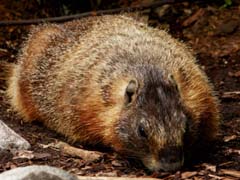
One of the more endearing denizens of the high country is the yellow-bellied marmot, whose high-pitched whistle is often heard echoing through the rocky canyons. These year-round residents fatten up all summer on the abundant wildflowers and roots all around, as well as the occasional treat left over from some careless hiker, and then snooze in their cozy dens through the winter months.
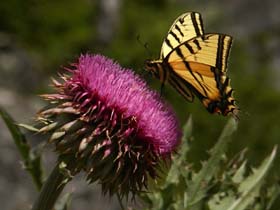
Another familiar creature in this wildflower paradise is the butterfly. This one is helping pollinate, unfortunately, an introduced species, the bull thistle, with its large purple flower and spiky leaves. Many of the national parks now enforce strict codes about stock feed, which has introduced many stubborn weed species into the otherwise pristine environments of the national parks.
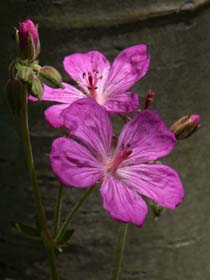
Unlike the almost white geranium found in the mountains of Colorado, the sticky geraniums of the Tetons are a deep purple, with darker veins that direct the pollinators to the center of the flower. These are true geraniums. Many of the horticultural flowers sold as geraniums are actually pelargoniums and have doubled petals. But these geraniums have that familiar smell to the leaves.
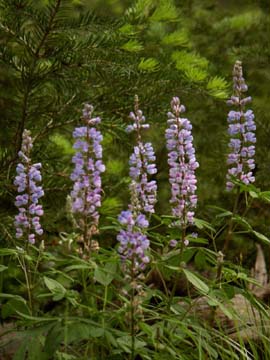
At right is one of the classic scenes of the Tetons: meadow lupine blossoms silhouetted against the fresh green needles of a fir tree. Lupines blanket the Wyoming plains and foothills through the spring and early summer.
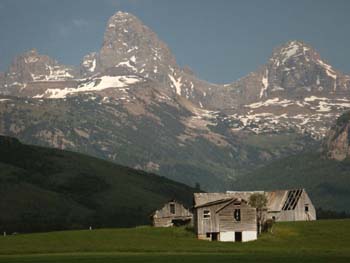
This isn't a reversed negative. From the west the Tetons seem to have a odd reversed cant. Unlike the east side, there are foothills on this side that form Teton Canyon beyond the old ranch in the foreground. Directly below the top of Grand Teton, the tallest peak, is the summit of Table Mountain, a relatively easy hike that yields one of the most spectacular views in the world.
